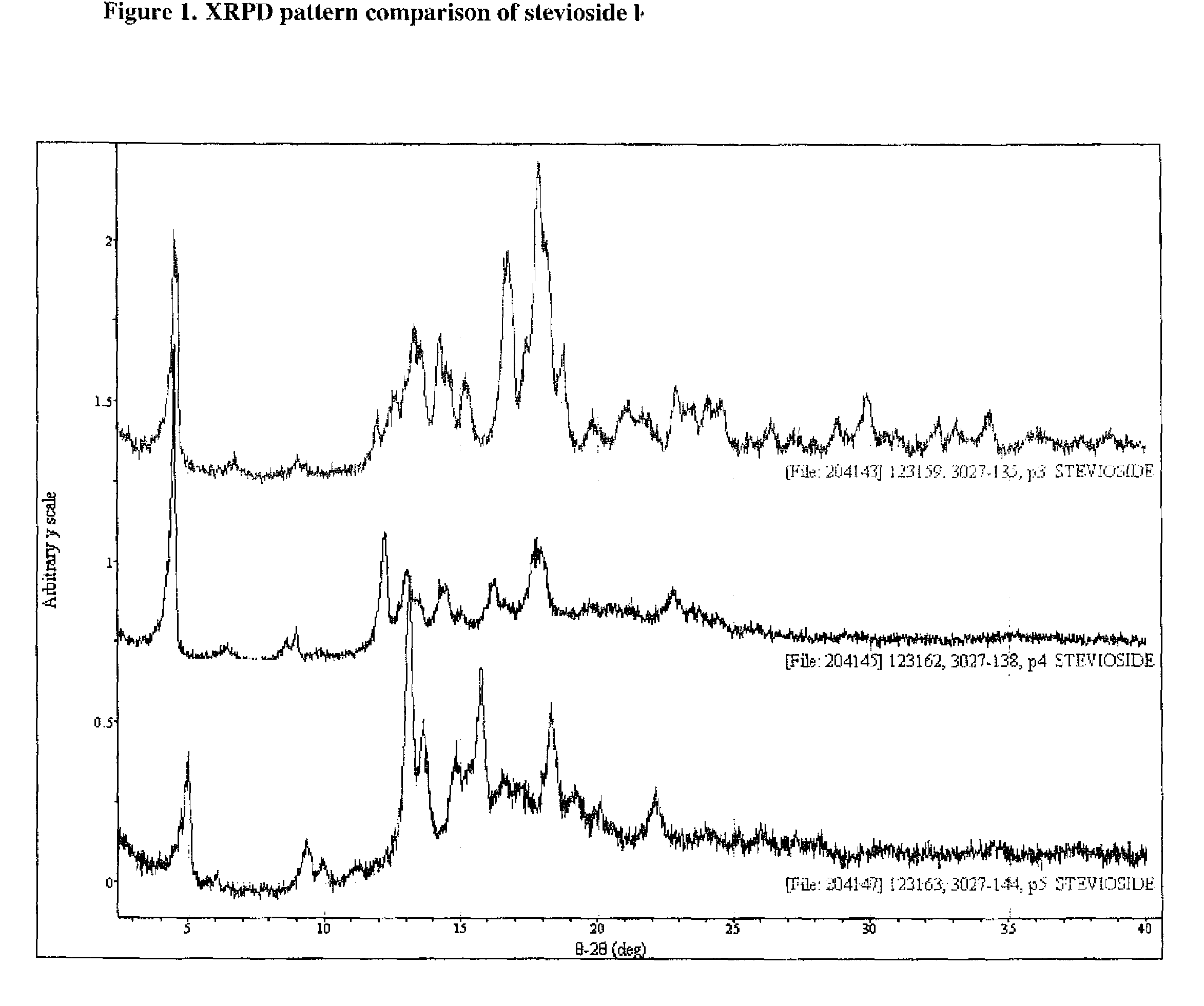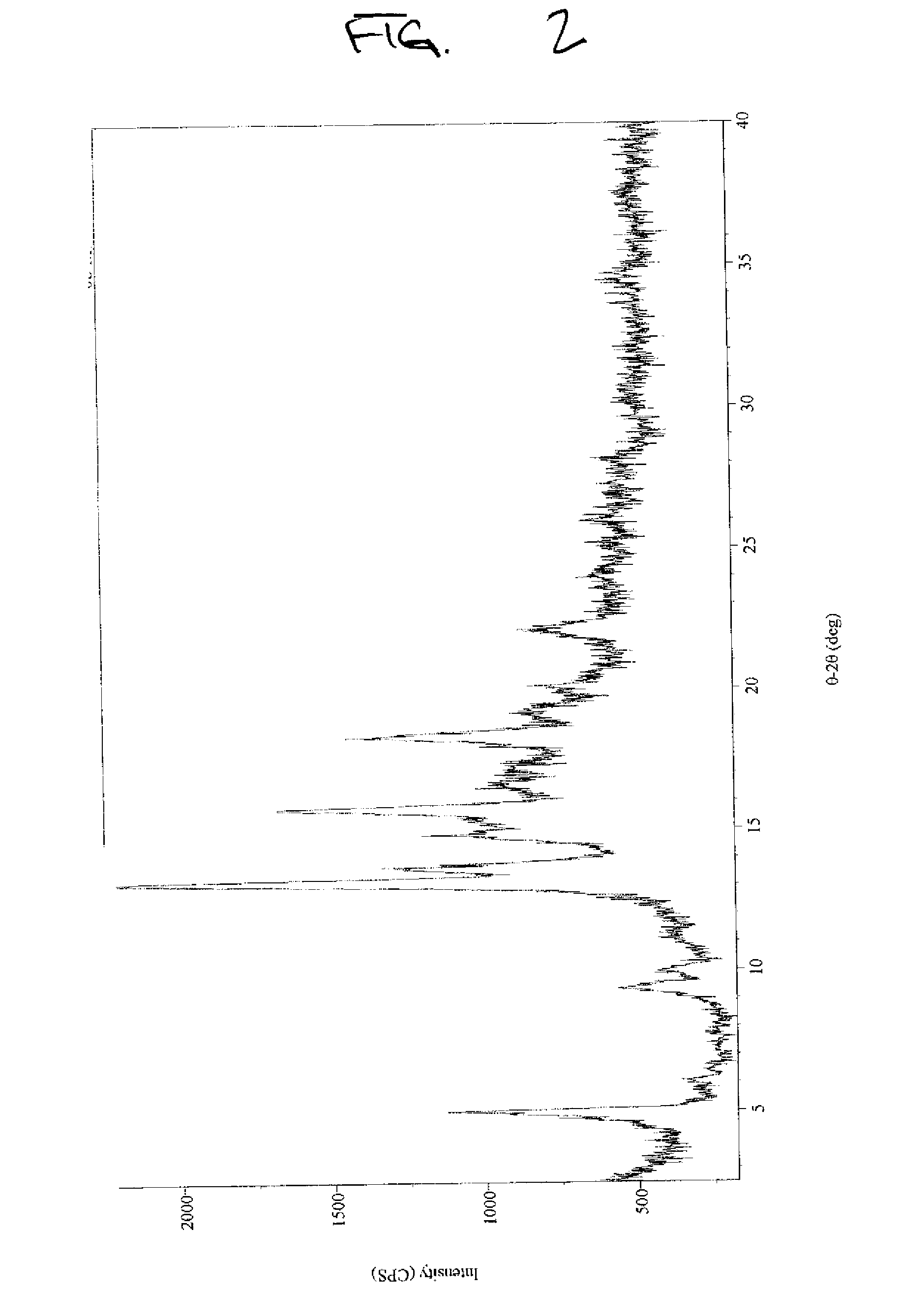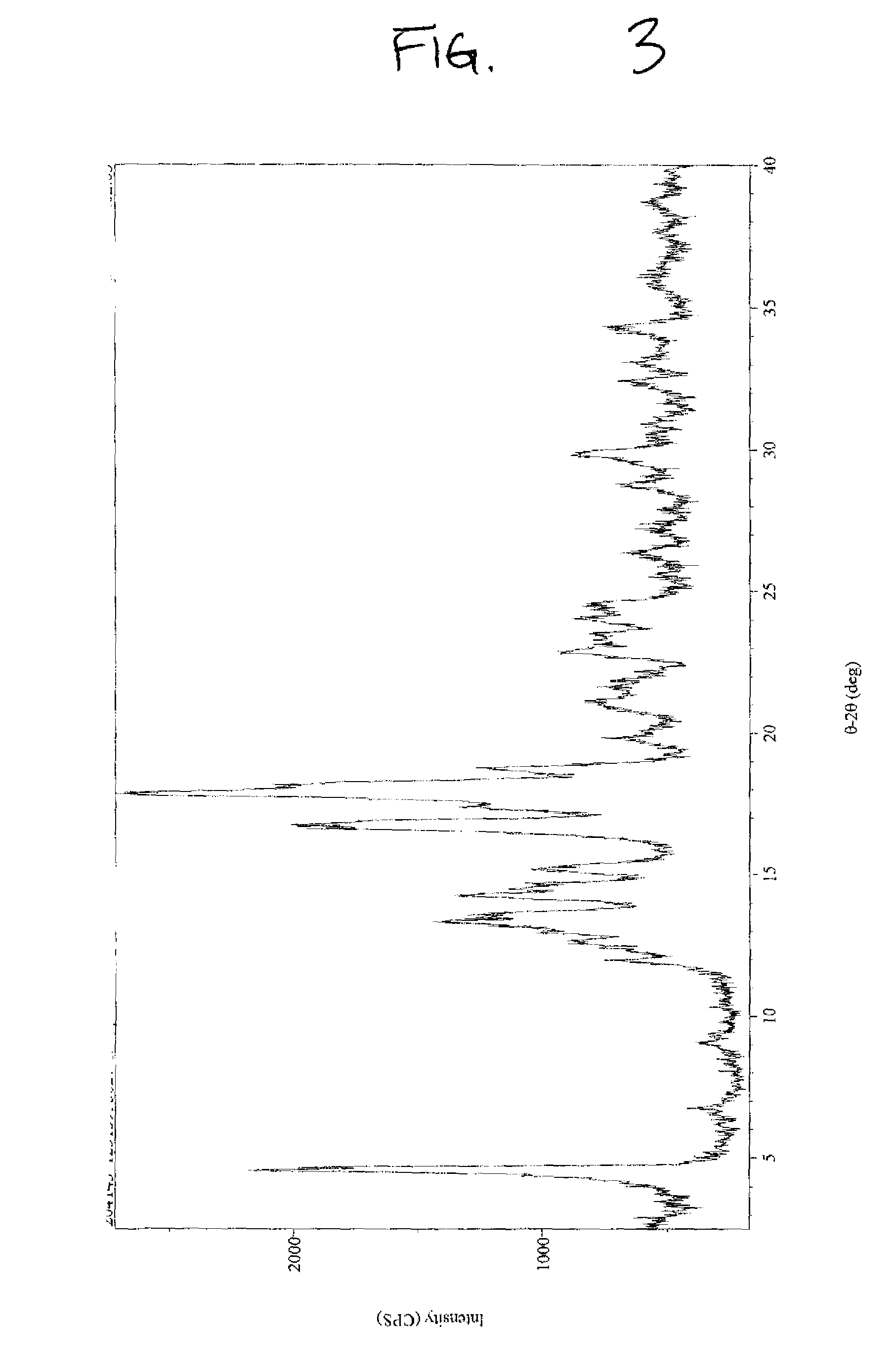Stevioside polymorphic and amorphous forms, methods for their formulation, and uses
a technology of stevioside and polymorphism, applied in the field of polymorphic and amorphous forms of stevioside, can solve the problems of not providing a substantially pure stevioside composition using only a single recrystallization step, and reducing the use of stevioside,
- Summary
- Abstract
- Description
- Claims
- Application Information
AI Technical Summary
Benefits of technology
Problems solved by technology
Method used
Image
Examples
example a
[0054]Crude stevioside was obtained from commercial source. The impurities (76.8% stevioside, 8.24% rebaudioside A, 2.38% steviolbioside, 0.109% rebaudioside D, 4.133% other steviol glycosides, 0.293% rebaudioside B, 2.38% steviolbioside) were identified and quantified using HPLC on a dry basis (moisture content 3.92%).
[0055]Crude stevioside (76%, 1 g) was suspended in 30.0 mL of methanol (99%) and warmed to 45° C. with continuous stirring for 10 minutes. Water was added in a dropwise manner (˜2.5 mL) until the crude material was completely dissolved and the solution was clear. The clear solution was filtered while hot and then cooled to room temperature overnight. The precipitated solid was filtered and washed with methanol (2×3×4 mL, 99%) and dried in a vacuum oven at 50° C. for 3-4 hours under reduced pressure (20 mm) to yield 0.588 g of purified Stevioside (>95% by HPLC) on a dry basis (moisture content 2.63%). XRPD results, illustrated in FIG. 3, indicate that the crystallized ...
example b
[0056]Crude stevioside (>76%, 5 g) was obtained from a commercial source and suspended in 100 mL of ethanol (99.96%) and warmed to 69° C. The stevioside dissolved within 5 minutes. The solution was boiled for another 10 minutes and allowed to cool at room temperature for two days. The crystallized stevioside was filtered and dried in a vacuum oven at 48-50° C. for 3.5 hours under reduced pressure (20 mm) to obtain a 73.00% yield of a pure crystallized stevioside (>97.0% by HPLC) on a dry basis (moisture content 3.55%). The XRPD results, illustrated in FIG. 4, indicate that the crystallized stevioside was a different crystalline form than that in Example A.
example c
[0057]Stevioside (>97%, 2 g) obtained from Example B was dissolved in 100 mL water by stirring the solution at 44° C. for 1 minute. The solution was allowed to cool to room temperature and was left for one day. The precipitate was filtered and dried at 60° C. for 24 hours in a vacuum oven under reduced pressure (20 mm) to obtain a 95% yield of crystallized stevioside (>97.0% by HPLC) on a dry basis (moisture content 5.33%). The XRPD results, illustrated in FIG. 2, indicate that the crystallized stevioside was a different crystalline form than in Example A or B.
PUM
| Property | Measurement | Unit |
|---|---|---|
| voltage | aaaaa | aaaaa |
| temperature | aaaaa | aaaaa |
| temperature | aaaaa | aaaaa |
Abstract
Description
Claims
Application Information
 Login to View More
Login to View More - R&D
- Intellectual Property
- Life Sciences
- Materials
- Tech Scout
- Unparalleled Data Quality
- Higher Quality Content
- 60% Fewer Hallucinations
Browse by: Latest US Patents, China's latest patents, Technical Efficacy Thesaurus, Application Domain, Technology Topic, Popular Technical Reports.
© 2025 PatSnap. All rights reserved.Legal|Privacy policy|Modern Slavery Act Transparency Statement|Sitemap|About US| Contact US: help@patsnap.com



